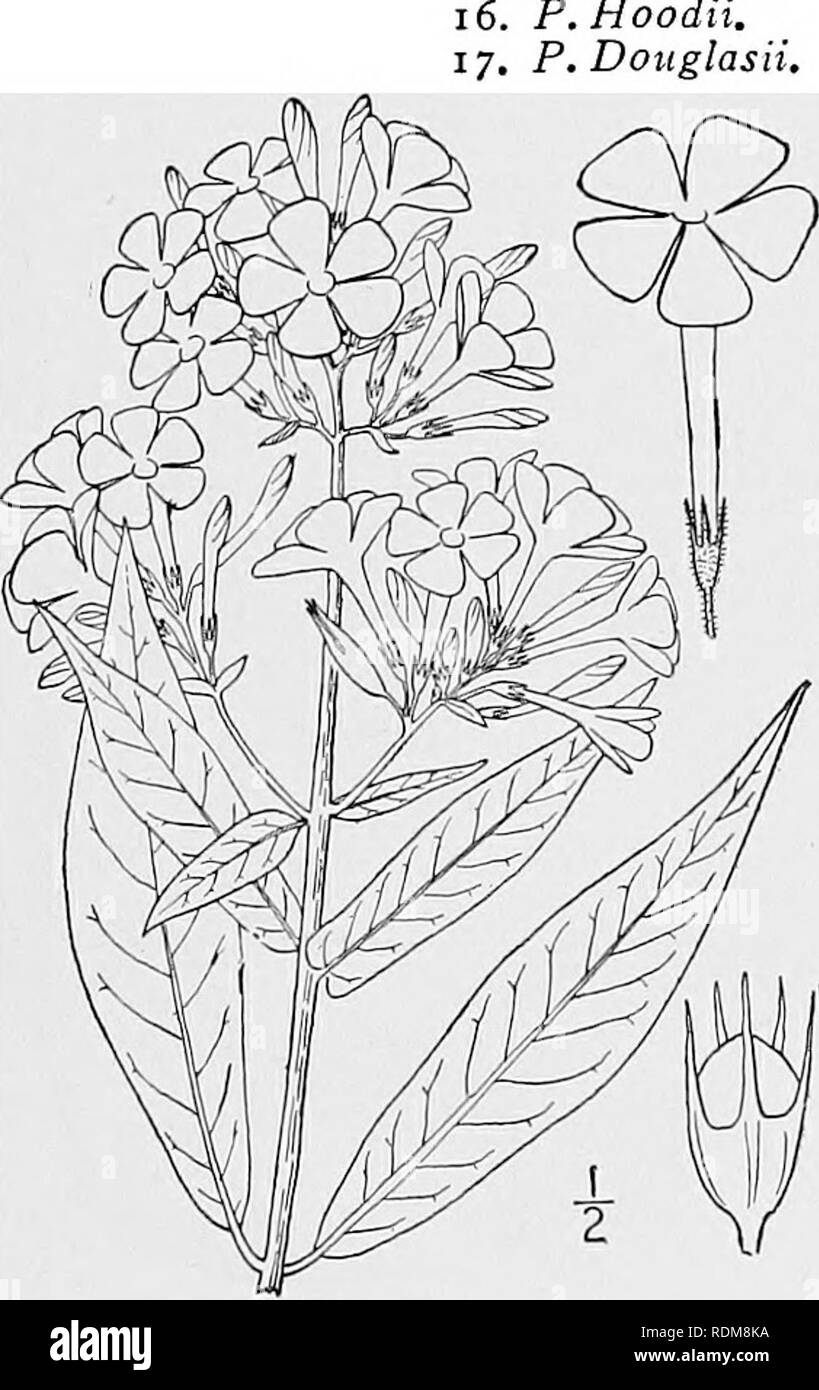. An illustrated flora of the northern United States, Canada and the British possessions, from Newfoundland to the parallel of the southern boundary of Virginia, and from the Atlantic Ocean westward to the 102d meridian. Botany; Botany. Genus i. PHLOX FAMILY. 53 Calyx not distended nor ruptured by the capsule; leaves alternate. Calyx-teeth herbaceous, not spinulose-tipped. Stamens declined ; leaves pinnate. Stamens straight and leaves entire in our species. Calyx-teeth spinulose-tipped ; leaves pinnatifid. Polemonium. Collomia. Naverretia. 1. P.paniculata. 2. P. amplifolia. 3. P. maculata. P.

Image details
Contributor:
The Book Worm / Alamy Stock PhotoImage ID:
RDM8KAFile size:
7.1 MB (314.2 KB Compressed download)Releases:
Model - no | Property - noDo I need a release?Dimensions:
1255 x 1990 px | 21.3 x 33.7 cm | 8.4 x 13.3 inches | 150dpiMore information:
This image is a public domain image, which means either that copyright has expired in the image or the copyright holder has waived their copyright. Alamy charges you a fee for access to the high resolution copy of the image.
This image could have imperfections as it’s either historical or reportage.
. An illustrated flora of the northern United States, Canada and the British possessions, from Newfoundland to the parallel of the southern boundary of Virginia, and from the Atlantic Ocean westward to the 102d meridian. Botany; Botany. Genus i. PHLOX FAMILY. 53 Calyx not distended nor ruptured by the capsule; leaves alternate. Calyx-teeth herbaceous, not spinulose-tipped. Stamens declined ; leaves pinnate. Stamens straight and leaves entire in our species. Calyx-teeth spinulose-tipped ; leaves pinnatifid. Polemonium. Collomia. Naverretia. 1. P.paniculata. 2. P. amplifolia. 3. P. maculata. P. ovata. P. glaberrima. i. PHLOX L. Sp. PI. 151. 1753. Perennial or rarely annual, erect or diffuse herbs, with opposite entire leaves, or some of the upper ones alternate, and large blue purple red or white flowers, in terminal cymes or cymose panicles. Calyx tubular or tubular-campanulate, 5-ribbed, 5-cleft, the lobes acute or acuminate, mostly scarious-margined and the sinuses commonly scarious. Corolla salver- form, the tube narrow, the limb 5-lobed; lobes obovate, orbicular or obcordate, spreading. Stamens straight, short, unequally inserted on the corolla-tube, included. Ovary oblong or ovoid, 3-celled; style usually slender; ovules 1-4 in each cavity. Capsule ovoid, 3-valved, at length distending and rupturing the calyx-tube. Seeds usually only 1 in each cavity of the capsule, ovoid, wingless or narrowly winged, not emitting spiral threads when wetted. [Greek, flame.] About 40 species, natives of North America and Russian Asia, many of them widely cultivated. Besides the following, some 24 others occur in the southern and western parts of North America. Type species: Phlox glaberrima L. Leaves flat, ovate, oblong, lanceolate or linear. Cymes panicled ; flowers short-pedicelled or sessile. Calyx-teeth subulate. Stem glabrous or puberulent; leaves lanceolate to oblong. Stem villous, glandular above; leaves ovate to ovate-lanceolate. Calyx-teeth lanceolate, acute; leaves lanc